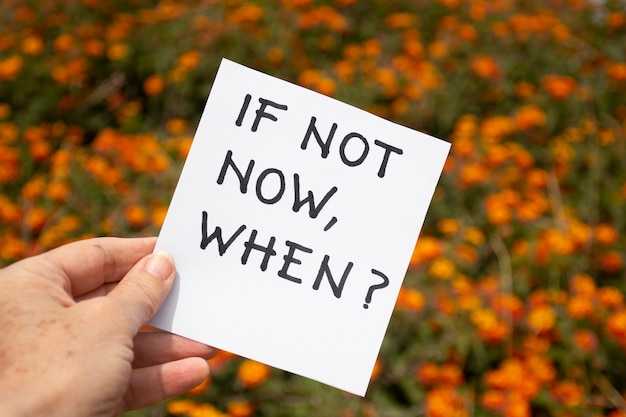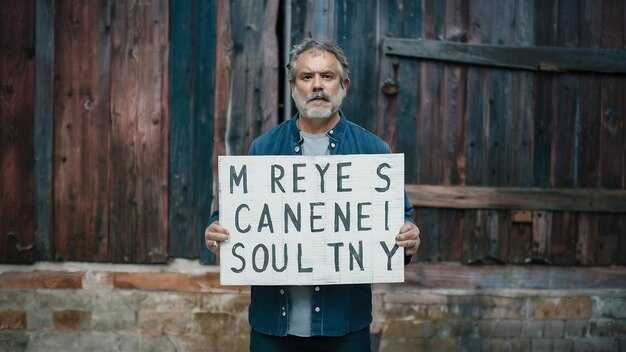You may be convinced they’ve turned their back on you — that their silence signals they’ve moved forward, that their withdrawal proves you weren’t sufficient. But consider another perspective: this isn’t rejection. The disorientation, the emotional highs and lows, the abrupt chill after warmth — these could be tests, not expulsions. People with avoidant patterns often don’t know how to tolerate intimacy. The instant a relationship begins to feel too intimate, too vulnerable, too emotionally real, something in them alarms. Their natural response is to retreat — not out of a lack of feeling, but out of a dread of what deep feeling might cost them. Most observers misread this behavior as indifference; in truth, it’s fear disguised as control. Frequently, just when you think you’re reaching them and they begin to feel seen and safe, they pull away. It happens predictably: they open up briefly, say things that make it seem like they’re changing, and then vanish into silence. Messages go unanswered, warmth cools, and they behave as if nothing happened. That’s when you fall apart, searching for what went wrong and trying to mend something that isn’t broken. The reality is you haven’t broken anything. Their overwhelm is triggered by the very thing they secretly hunger for: closeness. For an avoidant, love is not merely love — it’s a threat, vulnerability, exposure, a terrain they were never taught to survive. In childhood many learned a harsh lesson: dependence tends to bring disappointment; showing need invites punishment or rejection. They adapted by raising walls so tall that when love finally arrives, they do not know how to welcome it. It’s tragic: the defense meant to protect them ultimately isolates them. They ache for connection but dread dependence; they seek intimacy yet flee vulnerability. So when someone consistently loves them, their system panics. Intimacy feels too intense, too revealing; internal alarms whisper lies: you’re losing yourself, you’re too exposed, they will hurt you — escape now. That’s when the testing begins. It’s rarely deliberate. It’s instinctive. When they feel unsafe emotionally — even if objectively they aren’t — they withdraw to watch your reaction. Withdrawal is a defensive experiment: will you remain, or will you react like those who hurt them before? They want to know whether your love is conditional, whether you will lash out, plead, chase, or guilt them back into connection. If you respond with pursuit, it seems to confirm their worst belief: closeness equals control; love costs freedom. But if you respond with steadiness and inner security, something in them softens and their fear is called into question. This is where most people fail the test — not from weakness, but because it’s human to crave reassurance. When someone you love steps back, your impulse is to reach in, explain, fix, or pull them back. For the avoidant, however, that pursuit reads as pressure. They aren’t built to handle emotional intensity; your chasing simply validates their flight. The tragedy is mutual: one person fears losing connection, the other fears losing autonomy. Misunderstanding blooms in that gap. Dig deeper and the paradox becomes clearer: they don’t push away because they don’t care; they push away because they care too much. Real connection carries an emotional load they were never taught to bear. Loving an avoidant means facing someone who spent years learning not to need, now confronted with a person who awakens all the feelings they’ve buried. It terrifies them. Every moment of closeness reminds them of potential loss; every loving act feels like a risk. So they withdraw, not to reject you but to find safety — and for them, safety often equals distance. That contradiction is at the heart of avoidant thinking: they repel the very person they most desire. Their silence rarely means they’ve stopped thinking about you; more often, those quiet moments are full of internal replaying of conversations, analysis, guilt, and fear. Instead of reaching out, they retreat because vulnerability remains their enemy. Their testing asks whether you’ll abandon them when they become too much or too distant; it’s a survival tactic, a secret plea: don’t give up on me even when I make loving me difficult. Yet fear screams louder: don’t get too close or you’ll get hurt. This inner war creates the push–pull that leaves you doubting your worth and asking, how could someone who seemed to care so deeply act as if I don’t exist? The answer is their terror of emotional dependence. Dependence, to them, is synonymous with danger. As you become important, panic flares. They feel as though they’re losing control over feelings they’ve learned to manage, so they step back not to punish but to restore equilibrium — a form of emotional self-regulation that feels personal and painful to you. If you have loved an avoidant, you know this cycle well: brief windows of softness, then sudden, inexplicable distance. It’s like a wave — sometimes it rushes in warmth, sometimes it recedes so far you doubt the tide ever reached you. Yet it was real; fear simply overpowered desire. Until they can believe closeness won’t annihilate them, the pattern repeats. When avoidance tests you — pulling away right when things are going well — it’s not absence of love but terror of love. They watch to see if you default to the same behaviors that hurt them in the past: chasing, panicking, arguing, begging. Staying calm, grounded, and emotionally steady is the very thing that convinces them they might be safe. Most people fail here because panic is contagious. But meeting their withdrawal with composed presence — not coldness, but inner steadiness — interrupts their old story. Avoidant people expect intensity and drama; they’ve been conditioned to believe that opening up invites chaos. What shakes them is emotional stillness. When you don’t mirror their panic, when you don’t answer distance with desperation, you demonstrate that connection does not necessitate chaos and love needn’t be a trap. That subtle disruption can shift something profound: they start to reconsider running. It is difficult to hold this stance — watching someone you love pull away is excruciating. You feel unseen, hungry for reassurance, driven to act. Yet the most powerful move is restraint: not indifference, but strength. Power in love arises not from pursuit but from emotional regulation. You can love deeply without dissolving into their fear. You can remain compassionate without being consumed. When you show that their fear won’t drag you into turmoil, you pass the test they aren’t consciously administering. Ultimately, what they’re probing isn’t the depth of your love but its durability in the face of their fear: will it stay steady when they run? Can it remain gentle when they harden? Can it hold shape when they push it away? That’s their measure of emotional safety. Here’s an overlooked truth: avoidant people don’t crave pursuit; they want understanding. They need to feel safe without suffocation, to love without losing themselves. They want someone who can hold their affection loosely rather than clutch it tightly, someone who doesn’t take their retreat as a personal failure but recognizes it as momentary overwhelm. For them, being loved by someone calm and consistent is transformative. Grand romantic gestures mean little; what matters is steadiness — staying emotionally stable through turbulence. Having endured unpredictability from those who loved them, their nervous systems now trust patterns more than promises. So when they test you, the unspoken plea is, prove you’re different: show that you won’t crumble when fear appears, that you can remain trustworthy when they withdraw. Their tests, though painful, are silent cries for safety: prove that love can persist even when they run. Observe the pattern and you’ll see they test those who matter to them, not casual acquaintances. They test people who’ve stirred real feeling — because significant emotion threatens the identity they’ve built around independence. They lack the tools to process those feelings, so they measure your emotional stability to determine whether their storms can be weathered without drowning. How you react decides the size of their fear. Chase and panic confirm their worst assumptions; accusation and anger deepen it. But calm — not coldness, but composed warmth — speaks the language they understand: safety. When you refuse to match their panic, you interrupt the script of instability they’ve been handed. You show that connection can be peaceful rather than punishing, that love doesn’t mean loss of freedom. From that quiet disruption something subtle and beautiful begins: the thought that maybe running isn’t the only option. Still, maintaining composure when someone you love withdraws is nearly impossible. The urge to reach out is primal. Yet strength lies in feeling the pain without letting it dictate your actions. Each time you react from fear, you reinforce theirs. Begging and chasing feed the pattern. But anchoring yourself, holding emotional ground, becomes proof they’ve rarely seen: consistency. That is what eventually disarms an avoidant. Not eloquent declarations, but steady presence; not urgent pleas, but reliable calm. They don’t need fixing — they need someone who can endure their fear without attempting to eradicate it. By doing so, you begin to erode their defenses. Your silence becomes peace, your distance respect, your steadiness proof of care. Gradually they lean in. This change rarely unfolds theatrically; it’s hushed and incremental. A small message, a tentative reminiscence — tiny checks to see if safety still holds. When you meet these moments with calm warmth, not explosive emotion or icy withdrawal, you offer them a new narrative: vulnerability need not end in catastrophe. Responding with strength doesn’t mean suppressing your own feelings; it means mastering them, discerning yours from theirs. Their fear isn’t your burden to absolve, but your reaction shapes the dynamic. The more controlled your emotional center, the more influence you possess — not to coerce, but to model stability. The avoidant’s silence loses its power over your self-worth; their distance no longer undermines your confidence. You see them as someone wrestling between fear and love, and you stop trying to win their battle for them. That’s when transformative change can begin: fear softening into trust because they are repeatedly shown an alternative to the chaos they expect. Avoidants do not trust easily. To them love feels volatile, like stepping into fire. But when love is consistently non-demanding, non-smothering, non-punishing, they start to recognize safety. Change is gradual — fewer withdrawals, more timely responses, small increases in vulnerability. Healing for the avoidant isn’t a sweeping declaration but a collection of modest surrenders. The grip of fear loosens and trust seeps in, not via words but through time and unwavering calm. When that trust develops, their tone mellows, their presence lengthens, their guard lowers slightly. The tension between you eases. They may not voice it, but internally they begin to believe that maybe love needn’t hurt. Maybe they can remain. That is when fear morphs into connection — imperfect, fragile, but genuine. Avoidants are weary of perpetual flight; they long to be seen and loved, yet lack the capacity to accept it without feeling trapped. When you demonstrate that love can coexist with autonomy, part of them heals. They discover that vulnerability is not always disastrous and that being loved doesn’t erase the self. Every test they impose becomes an opportunity to build trust. Each silence, withdrawal, and wall is not a verdict but a checkpoint toward safety. When you choose patience over panic, you teach them that love can outlast fear. You show it’s possible to hold both closeness and freedom. That’s the profound beauty of this work: fear gives way to trust through acceptance rather than control. They come to understand you’re not forcing them to stay but offering peace if they choose to. They learn that love can exist without coercion, that emotional space is not abandonment. That’s when defenses begin to fall and the runner begins to remain. But a crucial restraint must be remembered: this process cannot be rushed or demanded. Trust cannot be coerced. The more you press for closeness, the more they flee. Healing for avoidants proceeds slowly, silently, through repeated acts of reliability. Sometimes the wisest act is to release the outcome and simply embody the safety they lack. In the end it isn’t your speeches that heal — it’s your presence, your consistent, calming energy that demonstrates you are not a threat. Their fear then finally has permission to loosen. When fear converts into trust, it alters two hearts. Your understanding of love transforms: it’s not about intensity but about presence, patience, and a space within which another can finally exhale. That is the gift: the permission to stop fighting internal battles, to stop testing, to simply feel. They may never thank you aloud; they may not even recognize the role your calm played. But you will notice the change — in the way they stop running, in how they begin to stay, in the slow turning of fear into ease. Sometimes love is not declared but demonstrated through quiet endurance, through steadiness amid chaos, gentleness amid confusion, patience amidst fear. The strongest love can be the softest: the kind that doesn’t chase but trusts that when hearts are ready, they will return. So remember: it’s not rejection, it’s fear. When you answer with calm instead of panic, you don’t merely alter the immediate relationship — you transform the deeper dynamic between two people, and you change the



 This Is How Avoidants Test You (It’s Not Rejection, It’s Fear) | Jordan Peterson Motivational Speech">
This Is How Avoidants Test You (It’s Not Rejection, It’s Fear) | Jordan Peterson Motivational Speech">




 The Avoidant’s Secret Clock: The Truth About WHEN to Reach Out (Psychology Explained)">
The Avoidant’s Secret Clock: The Truth About WHEN to Reach Out (Psychology Explained)">
 Do THIS and Avoidants Either STEP UP or STEP OUT (5 Boundaries) | Jordan Peterson">
Do THIS and Avoidants Either STEP UP or STEP OUT (5 Boundaries) | Jordan Peterson">
 The Final Dirty Trick Avoidants Use When You Stop Caring (This Will Hurt) | Jordan Peterson">
The Final Dirty Trick Avoidants Use When You Stop Caring (This Will Hurt) | Jordan Peterson">
 Don’t Let These Attachment Styles Hurt Everyone (4-Video Compilation)">
Don’t Let These Attachment Styles Hurt Everyone (4-Video Compilation)">
 How much PAIN have you BURIED in your Marriage?">
How much PAIN have you BURIED in your Marriage?">
 Quick Technique to Instantly Change How You See the World">
Quick Technique to Instantly Change How You See the World">
 Get Out of Romantic Obsession And Open Your Life to Real Love">
Get Out of Romantic Obsession And Open Your Life to Real Love">